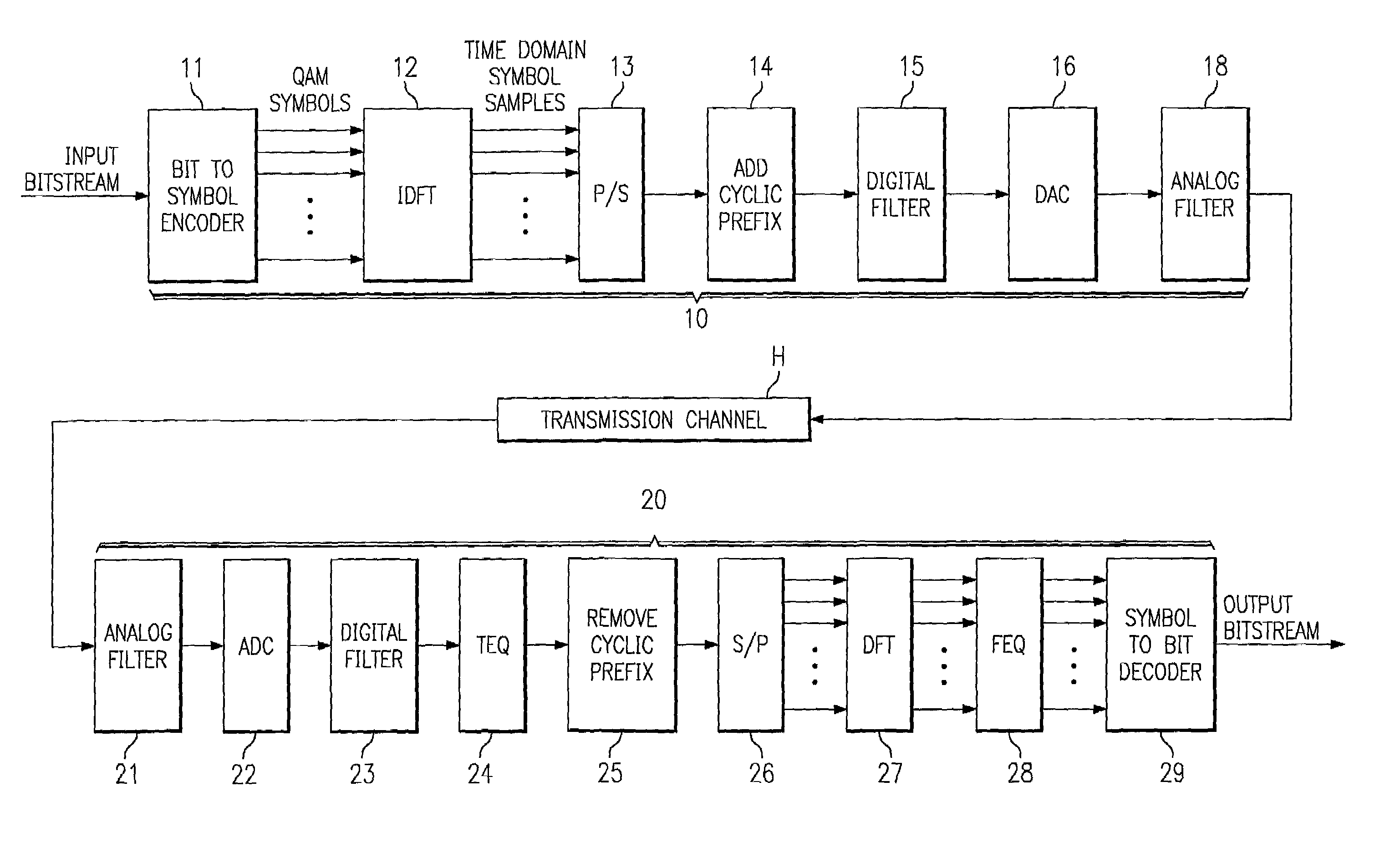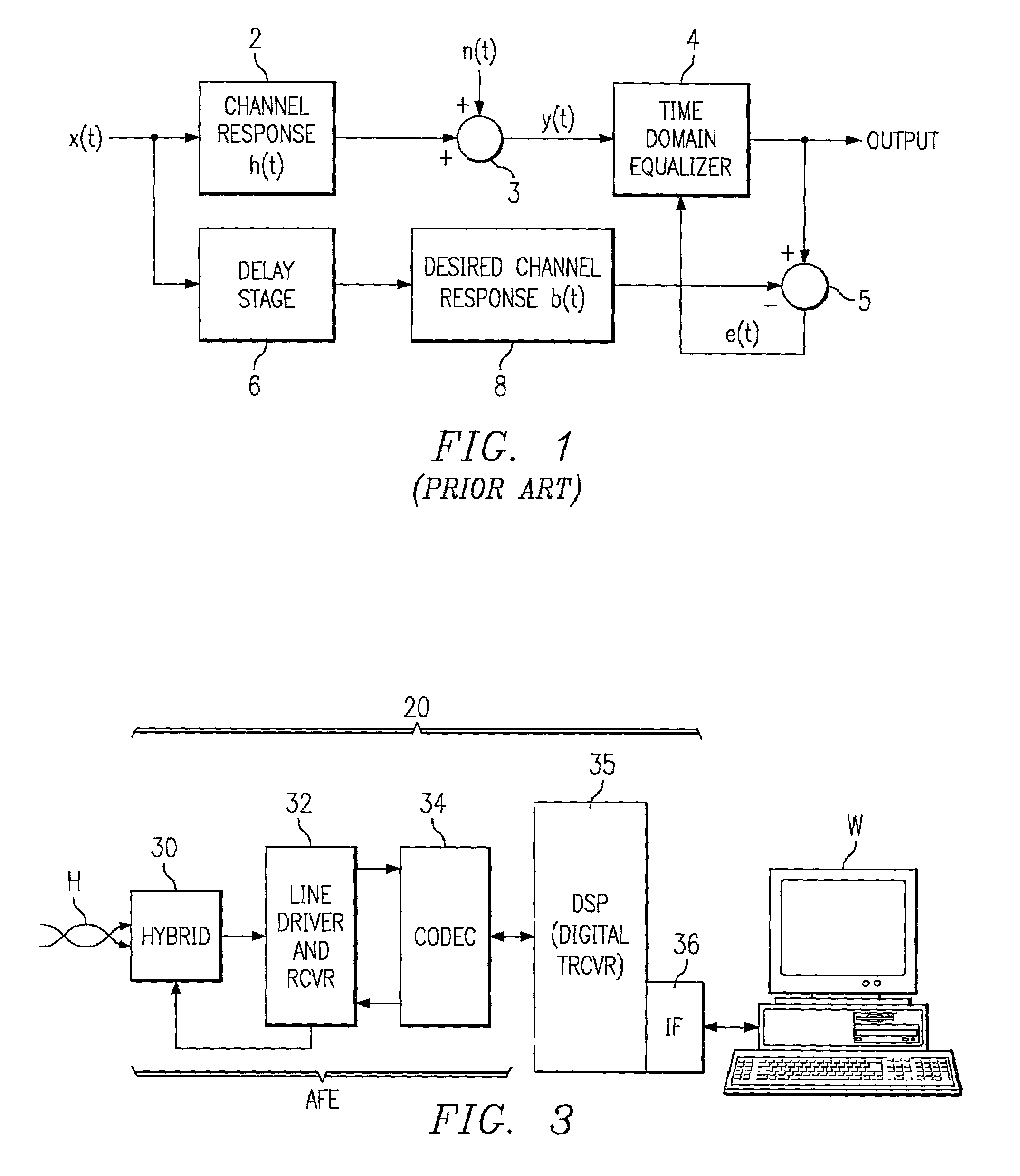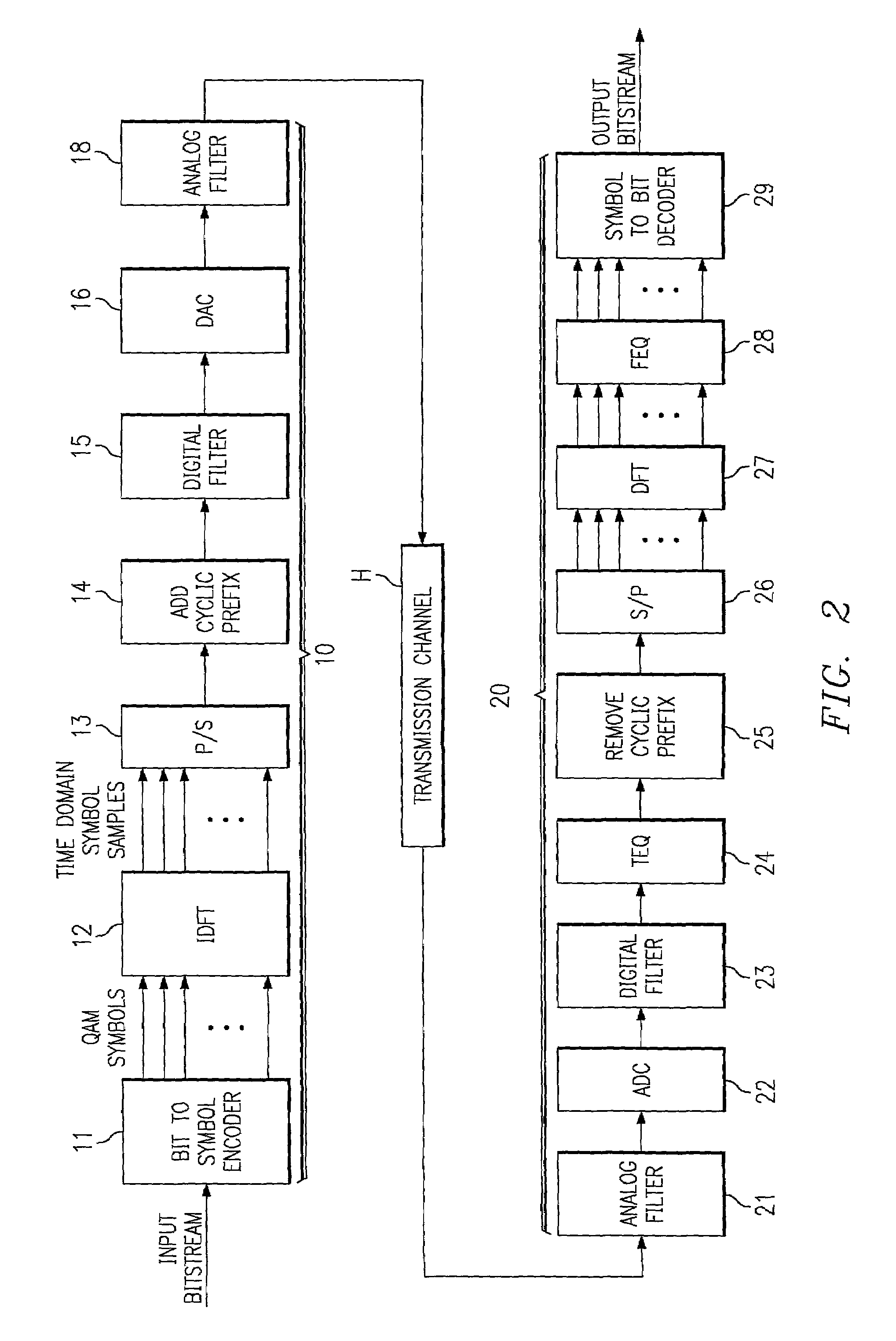Time domain equalizer for DMT modulation
a time domain equalizer and dmt technology, applied in the field of data communication, can solve the problems of reducing the efficiency of transmission, and reducing the orthogonality of subchannels, so as to maximize channel capacity and optimize the effect of shortening the effective transmission channel respons
- Summary
- Abstract
- Description
- Claims
- Application Information
AI Technical Summary
Benefits of technology
Problems solved by technology
Method used
Image
Examples
Embodiment Construction
[0033]The present invention will be described in connection with an example of its implementation in a transceiver, such as a Digital Subscriber Line (DSL) modem. It will be apparent to those skilled in the art having reference to this specification that this invention is particularly well-suited for use in such an application. However, it is also contemplated that this invention will be of similar benefit in many other applications that involve the use of a time domain equalizer, particularly in its application of shortening the impulse response of a transmission channel. It is therefore to be understood that these and other alternatives to the embodiment described below are contemplated to be within the scope of the invention as claimed.
[0034]FIG. 2 functionally illustrates an example of a DSL communication system into which the preferred embodiment of the invention is implemented. In the system of FIG. 2, only one direction of transmission (from transmitting modem 10 to receiving...
PUM
 Login to View More
Login to View More Abstract
Description
Claims
Application Information
 Login to View More
Login to View More - R&D
- Intellectual Property
- Life Sciences
- Materials
- Tech Scout
- Unparalleled Data Quality
- Higher Quality Content
- 60% Fewer Hallucinations
Browse by: Latest US Patents, China's latest patents, Technical Efficacy Thesaurus, Application Domain, Technology Topic, Popular Technical Reports.
© 2025 PatSnap. All rights reserved.Legal|Privacy policy|Modern Slavery Act Transparency Statement|Sitemap|About US| Contact US: help@patsnap.com



